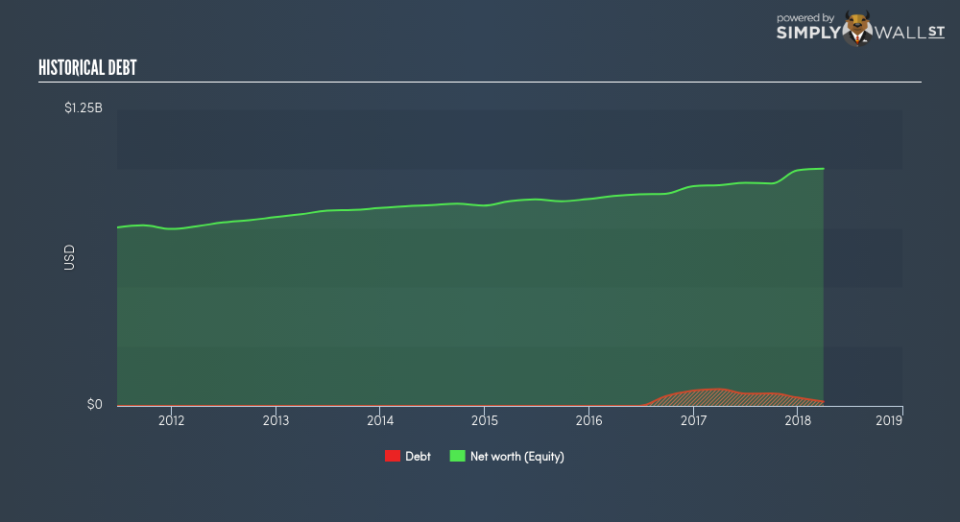What Investors Should Know About Weis Markets Inc’s (NYSE:WMK) Financial Strength

Weis Markets Inc (NYSE:WMK) is a small-cap stock with a market capitalization of US$1.46b. While investors primarily focus on the growth potential and competitive landscape of the small-cap companies, they end up ignoring a key aspect, which could be the biggest threat to its existence: its financial health. Why is it important? Companies operating in the Consumer Retailing industry facing headwinds from current disruption, even ones that are profitable, are more likely to be higher risk. So, understanding the company’s financial health becomes essential. Here are a few basic checks that are good enough to have a broad overview of the company’s financial strength. Though, given that I have not delve into the company-specifics, I suggest you dig deeper yourself into WMK here.
Does WMK produce enough cash relative to debt?
WMK’s debt levels have fallen from US$64.48m to US$34.99m over the last 12 months – this includes both the current and long-term debt. With this reduction in debt, WMK currently has US$84.97m remaining in cash and short-term investments for investing into the business. On top of this, WMK has generated US$165.81m in operating cash flow over the same time period, resulting in an operating cash to total debt ratio of 473.92%, meaning that WMK’s operating cash is sufficient to cover its debt. This ratio can also be interpreted as a measure of efficiency as an alternative to return on assets. In WMK’s case, it is able to generate 4.74x cash from its debt capital.
Does WMK’s liquid assets cover its short-term commitments?
Looking at WMK’s most recent US$274.34m liabilities, it appears that the company has been able to meet these commitments with a current assets level of US$483.31m, leading to a 1.76x current account ratio. Usually, for Consumer Retailing companies, this is a suitable ratio since there is a bit of a cash buffer without leaving too much capital in a low-return environment.
Is WMK’s debt level acceptable?
With debt at 1.79% of equity, WMK may be thought of as having low leverage. WMK is not taking on too much debt commitment, which may be constraining for future growth.
Next Steps:
WMK has demonstrated its ability to generate sufficient levels of cash flow, while its debt hovers at a safe level. Furthermore, the company exhibits proper management of current assets and upcoming liabilities. I admit this is a fairly basic analysis for WMK’s financial health. Other important fundamentals need to be considered alongside. I recommend you continue to research Weis Markets to get a better picture of the stock by looking at:
Future Outlook: What are well-informed industry analysts predicting for WMK’s future growth? Take a look at our free research report of analyst consensus for WMK’s outlook.
Valuation: What is WMK worth today? Is the stock undervalued, even when its growth outlook is factored into its intrinsic value? The intrinsic value infographic in our free research report helps visualize whether WMK is currently mispriced by the market.
Other High-Performing Stocks: Are there other stocks that provide better prospects with proven track records? Explore our free list of these great stocks here.
To help readers see pass the short term volatility of the financial market, we aim to bring you a long-term focused research analysis purely driven by fundamental data. Note that our analysis does not factor in the latest price sensitive company announcements.
The author is an independent contributor and at the time of publication had no position in the stocks mentioned.

 Yahoo Finance
Yahoo Finance 
